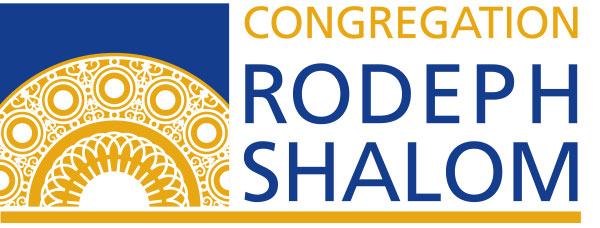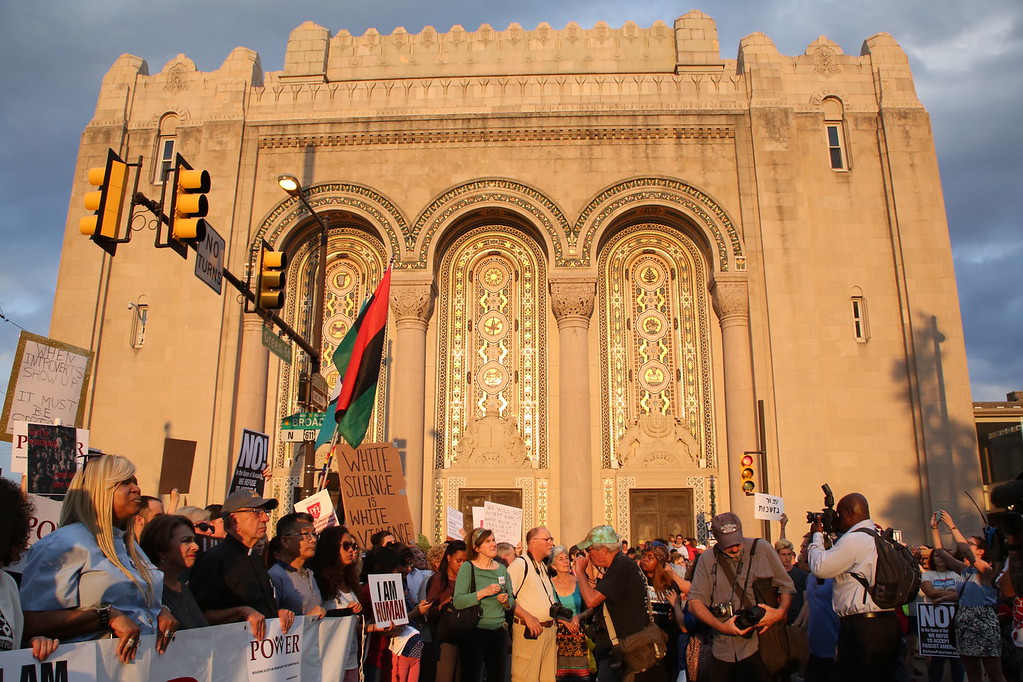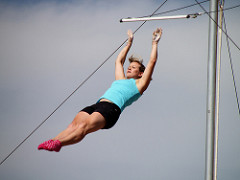In an email, from me to Rabbi Freedman: “Hi Eli – Can you roll the Torah scroll to the correct spot for tomorrow? Thanks—Jill”
In an email response, from Rabbi Freedman to me: “Will do.”
Have you ever heard Eli Freedman, respond “Will do?” Maybe “Sure.” Or “No Prob.” The Rabbi Freedman you and I know and love would not inflate formality. If anything, he makes interactions more warm and friendly, not less. I know him well enough to know: that was not Rabbi Freedman. It was Rabbi Freedman, clicking on the suggested response, from Google-mail. That already-composed reply was authored by Artificial Intelligence. And the email shortcut got the job done.
The role of Artificial Intelligence, known by its initials AI, is growing, raising society-transforming questions about AI possibilities, dangers, and ethics.
However, the question that most interests me? Not, what is AI, but: how does the presence of Artificial Intelligence help us to understand what it means to not be Artificial, that is, how does the presence of AI, reveal what it means to be human?
Do you remember the Turing Test? Named for mathematician Alan Turing in 1950, the Turing test determines: Can a computer successfully pretend to be a human being in a text-based conversation? For decades now, it’s achieved every day.
So here’s the question: If I can relate to a texting robot as well as I can relate to you, does that say something impressive about the robot…or something concerning about OUR connection? Indeed, Rabbi Erica Asch, president of the Central Conference of American Rabbis, teaches: It is not that robots have passed the Turing test; but rather, that we humans, have failed to expect deeper connection in human interactions! And research demonstrates, we keep getting worse at distinguishing the difference.
The Turing Test might challenge us: Let’s build human relationships, that we could not confuse with artificial relationships. In Rabbi Asch’s words: Say something that a computer can’t say.
In spiritual life, we have, not a Turing test; we have what I would call, a Buber test. The 20th century Jewish philosopher, Martin Buber, taught that real living is human encounter. Buber introduced the notion of the I-Thou Relationship. I-Thou connections are the wholly present, deeper moments, where many of us find the Divine. I-Thou teaches: human encounter is a spiritual opportunity.
In order for the I-Thou connection to happen, we cannot erase into each other, or into the moment; each of us is fully present in our individuality. For the I-Thou, we need each other.
When it comes to the connecting, critical to living a fully human life, Jewish wisdom offers a profound, joyful strategy, in the form of Shabbat.
On this day of Rosh Hashanah, also called HaYom HaRat Olam / the day of the world’s birth, we mark creation. We just read the Creation Story. God creates. And it is good. And then God rests. Contemporary author Judith Shulevitz notes, the sages ask: If God ceases from creating on the 7th day, then how does God create Shabbat? And, in our attempt to imitate God, how can we follow the commandment “to make Shabbat,” if the idea is, on Shabbat we do not make—anything? Within the paradox Shulevitz finds the logic: On the 7th day God creates not a thing, but a system of meaning. On Shabbat we do not make things; on Shabbat we make meaning.
The sabbath is one of the first things given to the human family and is part of what makes us human. Later, the Torah compels the Jewish family to make Shabbat holy, with these words recited last night in V’shamru: The people of Israel shall keep the sabbath, throughout the ages, as a covenant for all generations. For in 6 days God made heaven and earth, and on the 7th day God ceased from work and was refreshed / Vayinafash. Vayinafash, coming from the Hebrew word nefesh, soul. On Shabbat, together we re-soul.
Artificial Intelligence cannot celebrate Shabbat, and make it holy; computers cannot pray, hug, create a weekly community of singing and learning about the values we aspire to shape our lives. For all of these, we need each other. And as we rebuild post-pandemic community, household by household, soul by soul, these wholly human acts are among the things this congregation does with vitality, joy, belonging and meaning on Friday evenings, at the service where our community gathers every week.
Here’s what Shabbat looks like in our sanctuary: When I look out at the pews, about a third of the people on Friday evening are the ringers. They attend more often than not. They know the prayers, the tunes, and the service flow. They laugh at our jokes during the sermon, they bring a prayer book, or a greeting to a new-comer. After services they fill their homes, or restaurant reservations, with other congregants and seekers for Shabbat dinner. There is no robust Shabbat community without them.
Roughly another third of the people in the pews are congregants who attend often, sometimes for an occasion such as saying Kaddish, sometimes when there are timely issues challenging the world and they know we will wrestle with them through a Jewish lens, other times just because it is Shabbat, and they feel at home when re-embraced into the sanctuary. About another third of the people in the pews are guests. They are Jews and seekers from the area, they are people with marginalized identities drawn in by our commitment to equity-inclusion-diversity, they are people considering conversion to Judaism, or who just took a 23-and-Me genetic test and are curious about newly discovered Jewish ancestry, they are comparative religion students from Temple University, they are folks who just started addiction recovery, on a quest for a spiritual path, they are recent tourists thinking of moving to Philadelphia. Some feel so welcomed by the regulars they end up becoming regulars, others are just passing through, but now moving through the world, with a deeper appreciation for the Jews.
Every Friday night, from the very first notes in Cantor Hyman’s voice inviting us to sing, together, we are transformed. Shabbat at Rodeph Shalom, is the time our family comes together, to be… human…to take a collective breath – Six days a week we do what needs to be done. We pretend this world makes sense, just to function in it. On Shabbat, together, we affirm the uncertainty, honor the mystery; make it holy, and we call it a joy.
Or, better put, in the words of these Rodeph Shalom voices:
From one congregant: “Shabbat is my time, like a regular, mini-Rosh Hashanah– to encounter my community as I reflect on who I want to be and what I want to contribute to this world.”
Indeed, this congregant’s perspective is echoed by our tradition. The sages imagine that on Rosh Hashanah, God says to us: “My children, I look upon you as if today I had created a new creature.” If Rosh Hashanah marks HaYom HaRat Olam / the day the world is born anew, by inspiring our renewal, Shabbat brings this celebration of renewal into our every week.
From another congregant: “I take seriously the teaching that Shabbat does not exist for the purpose of recharging us for the week ahead. It’s just the opposite; Shabbat is the destination. We accomplish all that we do during the week in order to arrive, to look into the eyes of the other, and together to take in the joy, the ritual, the message, music, and community of Shabbat.”
I share this congregant’s passion – On Shabbat we are not here to re-charge for the work ahead. We are here to re-soul for the present moment. Our world demands toil and repair; our souls demand a sacred pause.
From a congregant: “Just to share space regularly and intentionally – to dance at L’cha Dodi, to hear congregants’ harmonies whether on or off key, the cry of a baby, someone sneezing, or to see someone fidgeting out of the corner of my eye – that physical presence matters. As someone who did not grow up Jewish, Shabbat has been a way to release myself from producing, to be a little less caffeinated, and to immerse in Jewish time with a community joining in an effort to slow down.”
This congregant would appreciate the way Rabbi Abraham Joshua Heschel puts it: “The meaning of the Sabbath is to celebrate time rather than space…to turn from the results of creation to the mystery of creation; from the world of creation to the creation of the world.” We are typically judged by what we produce. And the world needs us to produce. But our souls need us to connect, beyond a transaction. Shabbat won’t get us ahead or earn points from society. It’s not an accomplishment. That’s why Shabbat is so countercultural. A countercultural practice, demands prioritizing–society will not schedule around my non-conformist practice. And a divergent practice as a part of a minority identity will always be outside the norm – that’s one of the things that makes Jewish life special, even an act of resistance.
From a congregant: “During a time of scary illness for our family I remember going to Shabbat services. When we got to the part of the service when we pray for healing, I remember the comfort of saying my mom’s name aloud and feeling the whole RS community behind me.”
Our congregant might relate to the ancient sage, Rabbi Shimon ben Yochai, who taught: “if all the Jewish people observed the same 2 sabbaths/shabbatot in a row, they would be immediately redeemed.” Yes- I can see this truth, not as a reward for celebrating Shabbat but as a natural outcome. There must be an impact to singing together, releasing into prayer, leaning on, supporting, lifting each other, grappling with our teachings, affirming our values, honoring the sanctity of creation, and the possibility of the divine. Connection in holy time, is so powerful, it changes our lives.
Each week, our congregation gathers in vibrant Shabbat community. We say things that a computer can’t’ say. Together, in a sacred pause, vayinafash, we take a collective breath. On the day we are to make nothing, we make meaning. For this vitality we need each other. On the 7th day, Vayinafash, God was renewed.
With a glimpse of Rodeph Shalom Shabbat community now on Rosh Hashanah, the day the world is born anew…I pray that you experience a taste of Shabbat holiness—kedushah—that fills your cup, and at the same time leaves you wanting more, week after week – more of the I-Thou, real living of human encounter. So that this year, when you come face to face with life’s joys and with life’s unpredictability, when you need to connect, and live a more fully human life, you gather with your community on Shabbat, as together, we affirm the uncertainty; honor the mystery; make it holy, and we call it a joy.
Shabbat shalom.


